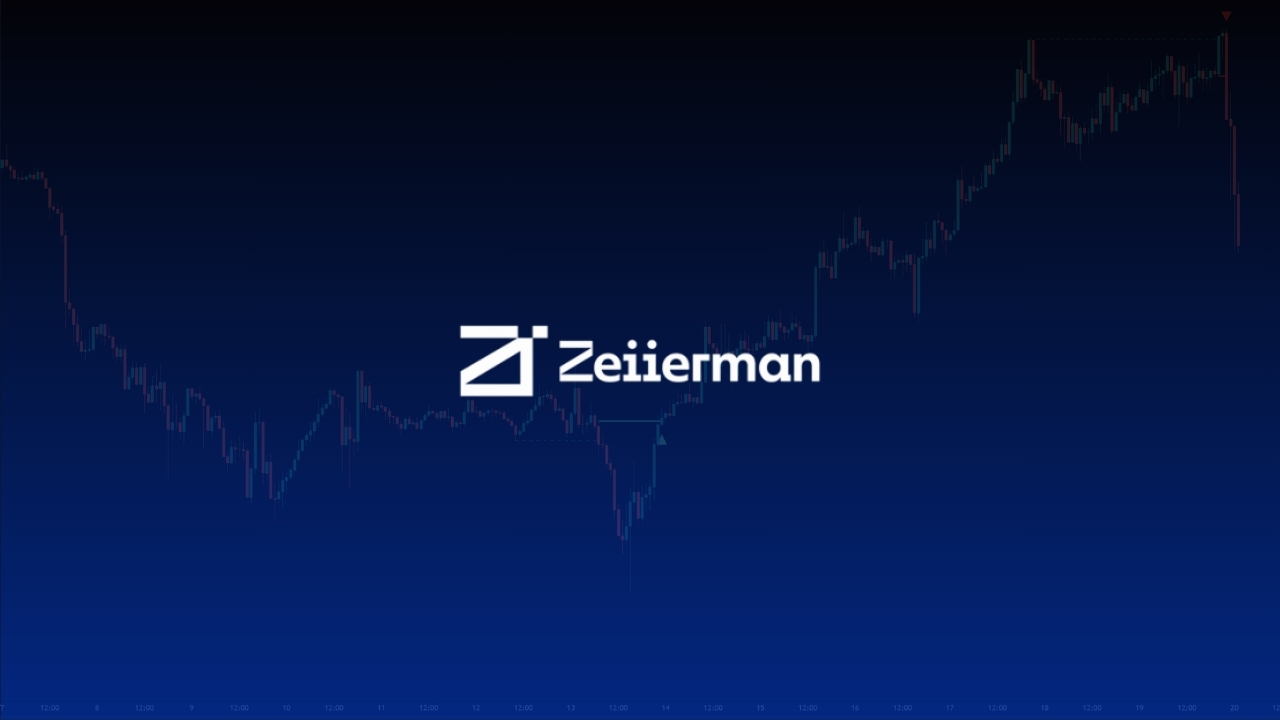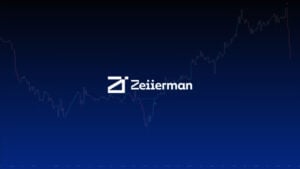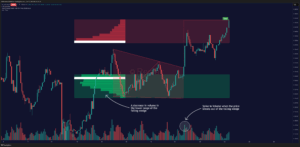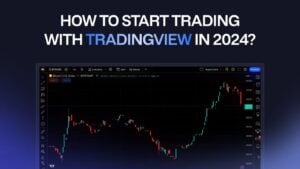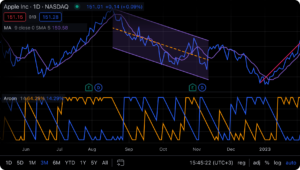Here’s the thing about the technical indicator market: it’s a complete wild west out there. You’ve got smarty-pants creating game-changing tools right next to snake oil salesmen pushing “guaranteed numbers” whom I wouldn’t trust with tomorrow’s weather, let alone market movements.
Some promise to make you rich overnight. Others are repackaged scripts with flashy names and no real value. In this noisy, hype-driven space, it’s easy to lose sight of the real purpose of technical indicators. Our mission at Zeiierman is simple: to provide a clear view of the market and to give everyday traders access to institutional-grade analysis tools.
In this article, you’ll learn the real story behind how quality indicators get made and, most importantly, how to tell the difference between legitimate sellers and the scammers who give this industry a bad name. But more importantly, what makes SM_Trader and I (Zeiierman) the “authority” to have any views on this topic?
Well, other than trading ever since we were toddlers, we also have a few accomplishments to showcase:
- Zeiierman Trading typically holds the #2 position among the biggest accounts on TradingView.
- Zeiierman Trading was recently awarded the Most Trusted Trading Tools Provider 2025 by the World Finance Awards.
- Last year, we got the Most Innovative Trading Tools Developer 2024.
The Purpose of a Technical Indicator
Despite what many YouTubers might tell you, technical indicators solve real-world problems.
SM_Trader had been creating these scripts for his personal trades far before we decided to make them public. These are, quite frankly, our very own Swiss Army knives for traders. Technical indicators / trading scripts have three major purposes:
- Problem-Solving: Automating repetitive tasks, for example, calculating Fibonacci retracements, or tracking real-time volatility.
- Democratizing Expertise: Bringing institutional-grade tools to retail traders. The indicator has to provide real value fairly to its users.
- Psychological Anchors: Simplifying decisions in chaotic markets. The right indicator will help you stay above the “noise” of the market.
If these indicators are so good, where does the problem lie? Why is it so hard to always be profitable, even with the so-called good indicators? Most traders (especially beginners) often fall into the trap of mistaking an indicator for a magic button. It’s not. Technical indicators are more akin to a rearview mirror in your car – it gives you the visibility you wouldn’t otherwise have. However, you’re still the one sitting behind the wheel to make the decisions and interpret the incoming data.
The Craft: What Goes Into a Great Indicator
Here’s the thing most people don’t realise: building an effective indicator is tough. It’s not just about writing a few lines of code and giving it a cool name. (although, if you think about it, we have been nailing it lately…)
A real indicator takes,
- Logic: Clear, testable logic that reflects actual market behaviour. You have to understand how the indicator will work and on what basis it will work.
- Backtesting: You need to know how it performed in different market conditions and assets. Data that backs the logic behind the tool is an essential part of an effective indicator. The tools have to be validated across decades of data.
- Visual Design: It should be easy to read, not a rainbow mess. Lots of indicators use fancy designs to look “premium”. It should be clear and made to simplify the market view.
- Documentation: If users don’t know how to use it, what’s the point? The quality sellers give clear instructions, video tutorials, and responsive customer support. They’re there when you have questions, and if not, the helpful community is always there.
- Feedback Loops: You launch, listen to users, improve, repeat. It’s crucial to understand the on-ground reality, and seeking valuable reviews helps in improving the tool. This is also to make the indicator future-ready.
Data comes first, then experience and gut feelings come last. If our tool can’t handle all of the market conditions, it’s back to the drawing board.
The Scam: Red Flags to Look for Among Sellers
The market is flooded with people trying to make a quick buck off hopeful traders. You’ll never hear us denying that despite our love and appreciation for the TradingView platform. Here are some red flags to look out for when searching for reliable indicator vendors:
- High-pressure sales tactics: “Buy now or the price goes up tomorrow,” “Only 5 licenses left” — these are classic scarcity tactics used to push impulse buying decisions. While they’re not a red flag on their own – it’s fair for a vendor to be marketing their products – scarcity tactics become suspicious when they’re paired with other “red flags” on this list.
- No Real Community: Scammers often operate under the radar. They don’t have Discords, forums, or active Telegram groups. That’s because they don’t want real conversations happening.
- No Transparency: If someone doesn’t show how the indicator works or can’t explain the logic behind it, it is a major concern. No matter how good the marketing may seem, always look for proper documentation of indicators’ logic, working, and reviews.
- Too-Good-To-Be-True Promises: “No losses,” “guaranteed returns,” and “100% win rate” are red flags. Real trading has risk — anyone claiming otherwise is selling a fantasy.
- Vague descriptions of methodology: “Uses advanced algorithms to predict market movements” tells you absolutely nothing. Quality sellers explain their methodology clearly because they’re proud of their work and seek valuable feedback. Similar to scarcity tactic, this is another marketing gimmick that is fine if not paired with other red flags.
How to Tell a Real Seller from a Scam Artist

Not sure who to trust? Here’s a checklist that we use ourselves when looking at other creators:
1. Transparency Standards
A true seller will have honest and open backtesting results. This means showing you the full picture – winning trades, losing trades, drawdown periods, and realistic expectations. It’s crucial to include (and discuss) the data of the worst-performing periods because hiding them would be dishonest. Of course, we recognize that big vendors like us won’t have this data public for all their indicators. It’s simply impossible.
There are two aspects to transparency standards. First, some of the indicators available should have this data public. And second, anyone telling you their indicator will make you rich is lying. Good indicators give you an edge on the curve, not a guarantee. They help you make better decisions, not perfect ones. After all, you are not buying a magic wand.
2. Support and Documentation
A quality indicator should come with clear instructions, parameter explanations, and a usage guide. If you’re confused about how to use what you bought, that’s on the seller, not you. Complex tools often need visual explanations. Look if the sellers create detailed video walkthroughs showing real or live trading scenarios because written instructions only go so far. This is why we made the Zeiierman YouTube channel.
Proof of Logic: Does the vendor show how the indicator works? Is it based on a concept you can research?. This documentation adds to the reliability of the indicator.
3. Trial and Refund Policies
Confident sellers often provide trials. If a vendor truly believes in their product’s quality, they are happy to let you test it first. Many legitimate sellers may offer 7 or 30-day money-back guarantees. This gives you time to properly check the tool in real market conditions. This is not a hard-and-fast rule, however, as many sellers have stopped refund policies (including us) due to scammers in the market.
4. Ongoing Updates and support
Markets evolve, platforms update, and bugs get discovered. Legitimate sellers maintain their products with regular updates. This shows that they are here for the long run. In fact, when you sign up, we will ask you to manage your newsletter lists. We have so many indicators that we’re updating all the time, and you WILL get annoyed, albeit happily.
Responsive customer support is also a godsend when using technical products. When you have questions or you run into issues, you should get helpful responses within 24-48 hours. Radio silence from sellers is unacceptable.
5. Community and Contributions
An active community is essential to make a tool that traders need. When traders share their experience with the indicator, it is a sign that the indicator is reliable.
You also need some value proposition. Does the vendor contribute real value to the community? Open-source scripts are important to build trust while delivering value. I mean, if they are selling a paid private indicator, they must have a good contribution background in the open-source space.
The Future of Technical Analysis Tools
1. Tech-Driven industry
Artificial intelligence (AI) and machine learning (ML) are no longer buzzwords. They’re becoming the backbone of modern technical analysis. Now, traders can use systems that can self-adjust parameters in real-time based on market volatility, reducing lag in traditional ways.
Additionally, AI indicators can detect complex chart patterns with higher accuracy, even in noisy markets. This could be revolutionary, but it also opens doors for more “black box” tools that traders can’t understand or verify. The next generation of indicators won’t just be tools—they’ll be ecosystems. The tools of tomorrow won’t just show signals. They’ll teach, adapt, and evolve with the market.
In this tech swiftness, we understand that the well-being of retail traders should not be compromised. If it thrives, this industry has to be led with integrity in delivering a real value product without gimmicks. This means prioritizing transparency and ethical practices over short-term profit.
2. Democratisation and Community-Driven Development
More retail traders are demanding institutional-quality tools, and developers like us are responding. In our community, we believe that the best ideas won’t come from a whiteboard—they’ll come from Discord chats, trader feedback, and real user requests. We have always firmly believed in a future where indicator development is more democratic, with communities helping shape tools from version 1 to the final release.
Conclusion
Every time you buy indicators from legitimate sellers who prioritize quality and education over quick profits, you’re voting for a better trading ecosystem. Every time you call out obvious scams or share honest feedback, you’re helping other hopeful traders avoid costly mistakes.
At Zeiierman, we believe in transparency, integrity, and community-driven innovation. We build tools we trust and use ourselves, and we invite others to hold us to that standard. Choose your tools wisely, use them as part of a broader strategy, and never stop learning. That’s the real philosophy behind successful trading.
